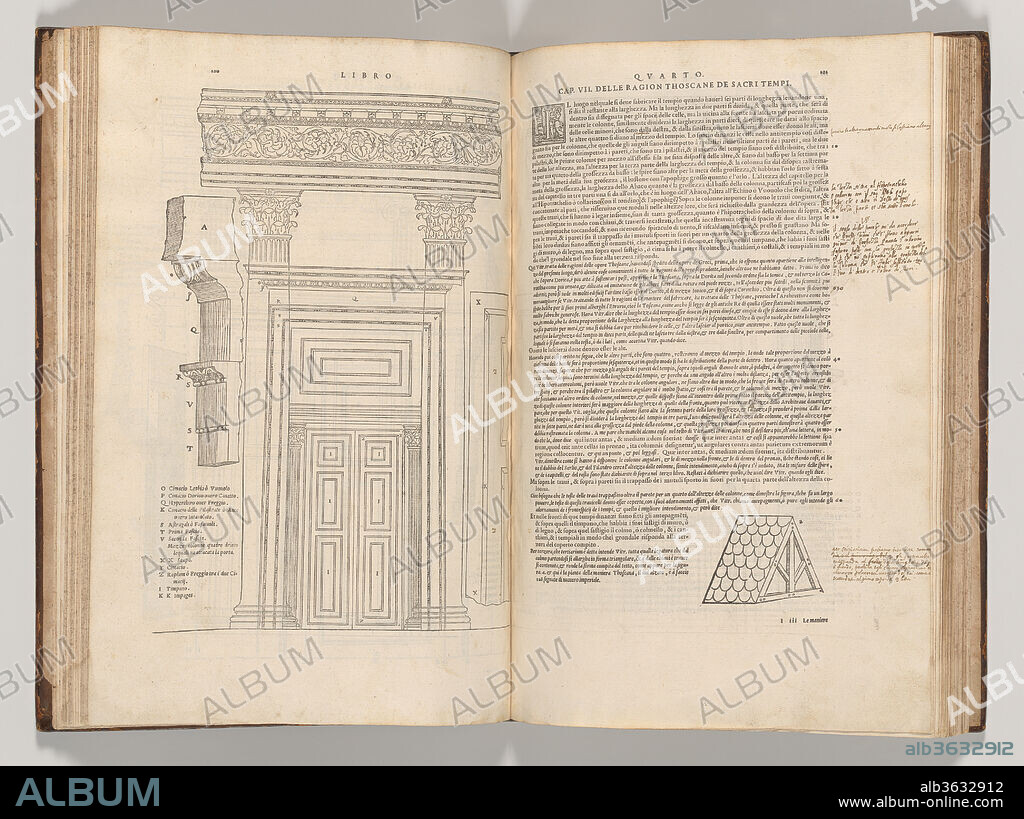alb3632912
I dieci libri dell'architettura di M. Vitruvio tradutti et commentati da monsignor Barbaro eletto patriarca d'aquileggia

|
Zu einem anderen Lightbox hinzufügen |
|
Zu einem anderen Lightbox hinzufügen |



Haben Sie bereits ein Konto? Anmelden
Sie haben kein Konto? Registrieren
Dieses Bild kaufen.
Nutzung auswählen:

Titel:
I dieci libri dell'architettura di M. Vitruvio tradutti et commentati da monsignor Barbaro eletto patriarca d'aquileggia
Untertitel:
Siehe automatische Übersetzung
I dieci libri dell'architettura di M. Vitruvio tradutti et commentati da monsignor Barbaro eletto patriarca d'aquileggia. Author: Marcus Pollio Vitruvius (Roman, active late 1st century B.C.). Designer: Illustrations designed in part by Andrea Palladio (Italian, Padua 1508-1580 Vicenza). Dimensions: 14 13/16 x 11 1/8 x 1 1/4 in. (37.6 x 28.2 x 3.1 cm). Illustrator: Some illustrations attributed to Giuseppe Salviati (Giuseppe Porta, called Il Salviati) (Italian, Castelnuovo di Garfagnana ca. 1520-ca. 1575 Venice). Published in: Venice. Publisher: Francesco Marcolini da Forli (Italian, Forli ca. 1500-after 1559 Venice). Translator: Translation and commentary by Daniele Barbaro (Italian, 1514-1570). Date: 1556.
The ten books of architecture by Marcus Pollio Vitruvius are the only text devoted to the art of building that remained from Roman Antiquity. The text was a great resource for Renaissance artists and architects who wished to learn and apply the Antique principles for their modern constructions. Initially, the text was hard to access, however, as it was written in Latin and was unillustrated. During the fifteenth century the first vernacular translation appeared in Italy, and in 1511, Fra Giovanni Giocondo published the first illustrated edition of the text. Vitruvius' text became a point of reference for all subsequent architectural treatises and as such, the genre of Renaissance architecture publications is marked by a high level of inter-referentiality. This specific copy of Daniele Barbaro's translation of Vitruvius is a very special case, however, as the text was (partially) illustrated by the well-known architect Andrea Palladio, who later published his own architectural treatises, and the book was owned by his direct successor, the architect Vincenzo Scamozzi.
Technik/Material:
Printed book with woodcut illustrations
Museum:
Metropolitan Museum of Art, New York, USA
Verleger:
Francesco Marcolini da Forli (Italian, Forli ca. 1500-after 1559 Venice)
Bildnachweis:
Album / Metropolitan Museum of Art, NY
Freigaben (Releases):
Model: Nein - Eigentum: Nein
Rechtefragen?
Rechtefragen?
Bildgröße:
4200 x 3143 px | 37.8 MB
Druckgröße:
35.6 x 26.6 cm | 14.0 x 10.5 in (300 dpi)
Schlüsselwörter:
 Pinterest
Pinterest Twitter
Twitter Facebook
Facebook Link kopieren
Link kopieren Email
Email
